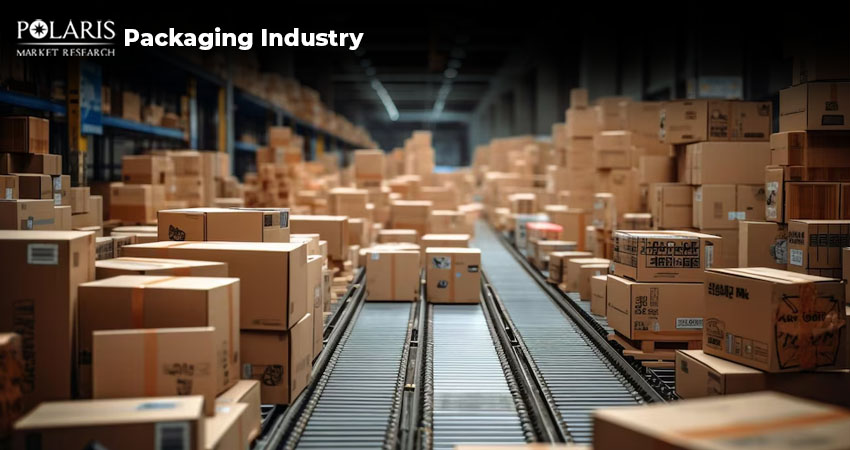Understanding The Transformative Role of Packaging in a Modern World

The modern world is increasingly driven by convenience and environmental awareness. This shift has transformed packaging into something that’s shaping how we interact with products. Packaging now has a key role to play in logistics and product preservation. It also enables effective branding and customer experience.
As such, understanding the significance of packaging is essential in the rapidly changing world. This blog post explains the role and importance of packaging in the 21st century. It also covers the various packaging types and the key trends shaping the market landscape. Read on!
Role and Importance of the Packaging Industry
The traditional packaging industry relied on the usage of natural materials. Today, the industry is known for its usage of advanced technologies and sustainable practices. Packaging serves multiple roles. It offers a way to protect and preserve products. Packaging is also an enabler of convenience and marketing.
Packaging is categorized into various types based on its purpose and the distribution chain stage. These include:
Primary Packaging: Primary packaging comes in direct contact with the product. The key purpose of primary packaging is to protect and preserve the product. It ensures the integrity and quality of the product until the consumer uses it. Examples of primary packaging include beverage bottles, toothpaste tubes, and candy wrapper bars.
Secondary Packaging: Secondary packaging encloses primary packaging by forming its outer layer. It offers a way to group products and protect them during transit. It also facilitates handling and distribution. In essence, primary packaging is the immediate container that directly holds the product. Secondary packaging is the outer layer that protects and groups the primary packaging.
Tertiary Packaging: Tertiary packaging is the outermost layer of packaging. It groups multiple products for shipping and storage. Tertiary packaging is also known as bulk packaging or transit packaging.
Packaging materials can take various forms. These include plastic, glass, metal, paper, and biodegradable packaging alternatives. The choice of material depends on various factors, such as product requirements, cost, and sustainability goals.
Key Trends Reshaping the Packaging Industry
Here’s a look at some of the key trends shaping the packaging industry landscape:
Introduction of Smart Packaging
Integrating technology into packaging is one of the key industry trends. RFID tags and QR codes are being used to enhance traceability and improve product safety. Technology integration is especially valuable in sectors like pharmaceuticals and food. This is because these sectors need the tracking of parameters such as freshness and storage conditions. Smart packaging enables consumers to access information about product origin and other parameters.
Growing Emphasis on Personalization and Customization
Consumers are increasingly opting for personalized and customized packaging. Brands are responding to this by leveraging packaging to create memorable customer experiences. Many companies are offering personalized packaging made of recyclable or plant-based materials. This is in response to the increased demand for eco-friendly packaging. Additionally, technologies like 3D printing are enabling the development of distinctive packaging.
Rise of E-Commerce-Driven Design
The rise of e-commerce has reshaped packaging requirements entirely. E-commerce packaging needs to prioritize efficiency, durability, and cost-effectiveness over aesthetic appeal. Packages must withstand multiple handling stages while remaining lightweight to reduce shipping costs. As a result, there’s a surge in the demand for tamper-proof and easy-to-open packaging.
Sustainability and Eco-Friendly Materials
Consumers are increasingly demanding eco-conscious alternatives. The introduction of stringent environmental regulations is fueling the shift towards greener materials. Companies are replacing traditional plastics with PFAS-free food packaging and plant-based polymers. Recyclable materials like cardboard and paper are gaining prominence due to their lower environmental impact.
Benefits of Modern Packaging Innovations
There are several benefits associated with advanced packaging products. Some of them include:
Environmental Benefits: Sustainable packaging helps reduce landfill waste. Its use helps reduce carbon dioxide emissions and promotes circular material usage. Biopolymer packaging and recyclable alternatives reduce ecological impact.
Improved Consumer Experience: Smart packaging and personalization offer engaging and emotionally resonant experiences. Interactive elements and convenience features help improve customer satisfaction.
Operational Efficiency: Automation and e-commerce-ready designs streamline packaging processes. They also reduce shipping costs and improve product protection. Efficient packaging allows for space optimization in storage and logistics.
Regulatory Compliance and Brand Trust: Innovative packaging meets aesthetic and functional demands. It also helps companies follow stringent regulations related to food safety and environmental standards. Following regulatory guidelines helps brands build greater consumer trust and credibility.
Conclusion
The packaging industry is a dynamic and essential sector. The sector plays a crucial role in our daily lives. Today’s packaging solutions are being designed not just for performance. They are being repurposed for a better planet and more sustainable practices. With trends like smart packaging and sustainable design gaining traction, businesses that adapt early will lead the way.

